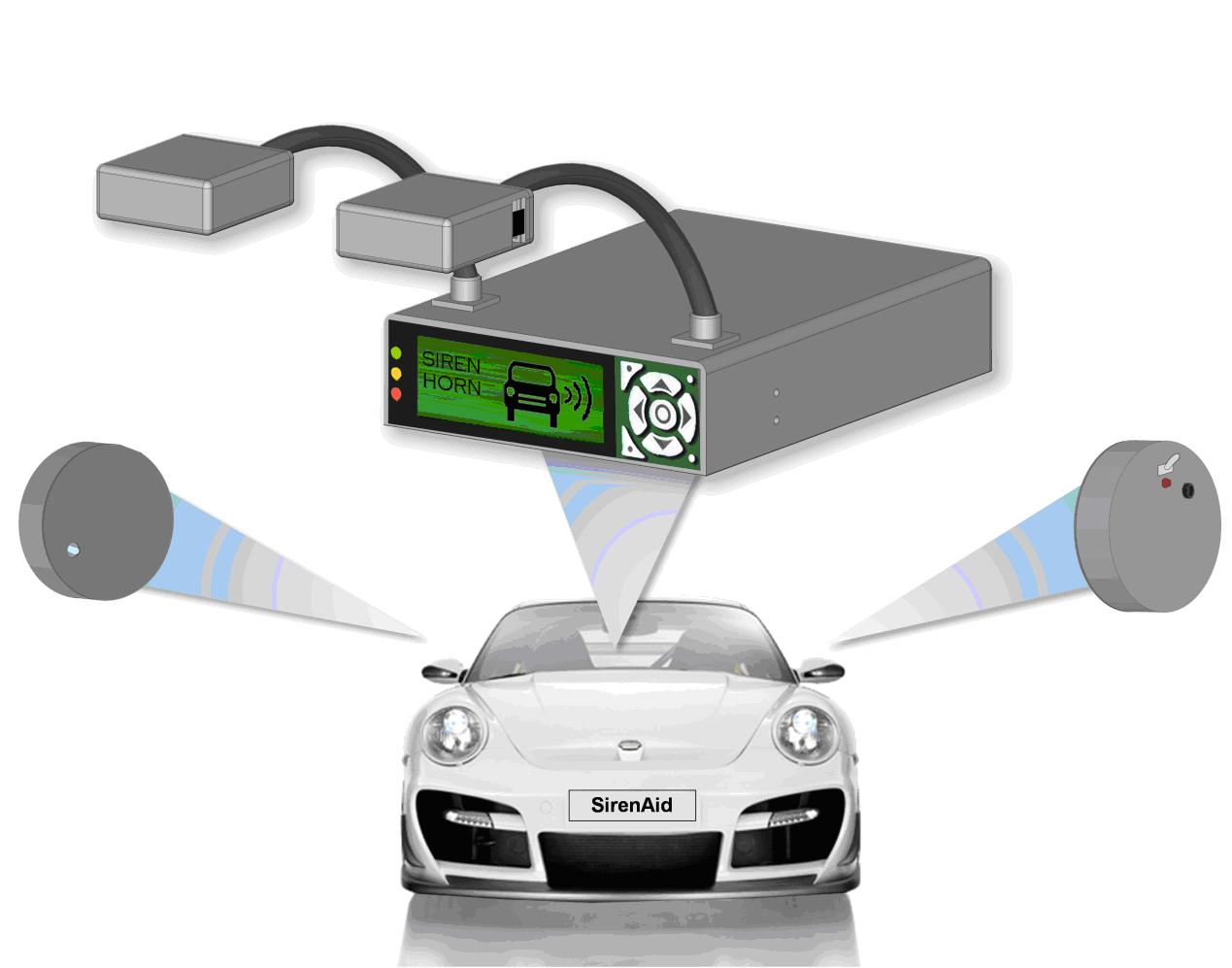An optical radar for the blind, characterized by notable advantages compared to the aids available today, will detect obstacles by scanning a depth image obtained by processing two images, taken from two different angles, similar to the human vision system. Siren Aid will give the hearing impaired a visual indication of sounds heard in the vehicle's environment.

Students in the Department of Electrical and Computer Engineering at Ben-Gurion University have developed an outline of an optical radar for the blind, which will detect obstacles by scanning a depth image obtained by processing two images, taken from two different angles, similar to the human vision system.
Unlike other aids, this system will allow maximum freedom of movement for the blind, will respond to height obstacles and will be simple to operate. The system will be based on a digital guidance device based on a computer, two video cameras and a scanner light source. The device will detect obstacles in the user's path and alert them to them, through a set of voice alerts. The system, developed by the students Elad Koperberg and Einav Tessa, under the direction of Prof. Shlomi Arnon, will be presented tomorrow, Monday, May 24.5.2010, XNUMX, as part of a conference The annual projects of the Department of Electrical and Computer Engineering at Ben-Gurion University.
The number of blind people in the world currently stands at about 40-45 million, and in Israel alone live about 26,000 blind people. To make the lives of the blind easier, hundreds of aids have been invented, among them guidance aids, the best known being the sense stick and the guide dog. These aids are designed to guide the blind in daily life, while avoiding the obstacles scattered along the way.
Prof. Arnon: "The existing aids have a number of notable disadvantages: First, the guide dog can carry out its duties for only about 7 years on average, while training the dog is a long and expensive process. In addition, there is a great shortage of guide dogs (in Israel only about 200 blind people are assisted by guide dogs). Second, despite the cheap price of the sensing stick, it does not provide a solution to the problem of height obstacles. Also, its use requires a fairly high skill. Of course, these two aids limit the blind's use of one hand."
Driving aid for the deaf
Another development that will be presented at the conference, also under the guidance of Prof. Arnon and the fruit of the work of Eilat Geva Oren Kirlis students, is the SIREN AID device, which is a driving aid intended for deaf drivers. The idea was born from the need to give the hearing impaired a visual indication of the sounds heard around the vehicle. The device consists of two microphones attached to the windshield, a central processing system, and a display system installed on the vehicle panel. SIREN AID is able to detect sound signals such as car horns and ambulance and police sirens - including a real-time indication of intensity, direction (right/left) and the type of sound heard (siren/horn), on a display screen. Of course, this aid can be used by the entire population.
The head of the department of electrical and computer engineering at the university, Prof. Dan Shadot, said that about 90 projects, carried out by 155 students, will be presented at the conference. According to him, the projects deal with a wide variety of topics, starting with those related to the construction of hardware and ending with theoretical research projects. The projects deal with the various areas in which teaching and research take place in the department: power systems, instrumentation and circuits, microelectronics, control, communication, signal processing, computers, electromagnetism, and electro-optics. "Some of the projects are carried out in cooperation with several companies in the industry. This collaboration gives students an opportunity to experience current engineering work."
You can review the summaries of all the projects on the department's website: www.ee.bgu.ac.il
